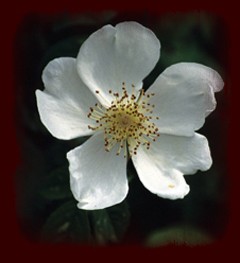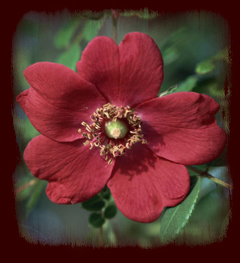
CLAN OF TUBAL CAIN

Musings on the Sacred -- by Shani Oates |
“What the superior man seeks, is within himself,
Many people who know of my involvement within the Traditional Craft and Holistic Therapies [as a Reiki Master - teacher of eastern healing and mystical techniques], ask me if this is not a contradiction in terms. I am obliged to answer that indeed it is not. Moreover, disciplines from either can be drawn upon to aid in concentration, focus and execution of both my will and energy/intent. The precepts of Reiki evolved from the ancient Hindu, Tantric Buddhist and indigenous [shamanistic] Bon practices of Tibet. Originally, Buddhism was Iconoclastic, but more accessible forms developed when absorbed by the Chinese, Japanese and Tibetan peoples, who were reluctant to give up their extensive pantheons of minor deities, as expressions of the eternal and unknowable truth. While it is true to say that I am not an advocate of cross-cultural disciplines, and abhor the substitution of one god/goddess from one pantheon for another ‘similar’ form in any magickal enterprise, I can and do extol the virtue of recognising and utilising any magickal act of value and relevance to my purpose. To clarify this apparent contradiction I would like to share with you a few basic concepts drawn from within the precepts of Reiki, which you will immediately be able to relate to. First, there is the use of Mantra - Sanskrit for ‘sacred utterance’. All Hindu and Tantric Buddhist rituals are accompanied by ‘Mantras’, whether uttered aloud or silently, ranging in length from a single syllable to a whole hymn. They may be used for secular, magical or religious purposes. Often they are used as a means of addressing deity and/or the manipulation of intrinsic divine powers, specific to the mantra used. It is noteworthy that many Mantras deal with quite mundane issues ranging from removing the venom from a snake or scorpion bite, curing diseases and fever, for providing health, wealth and sound sleep to long life, knowledge, forgiveness, and reaching the divine. Originally, the four ‘Vedas’ [sacred Hindu texts] comprised of Mantras to illuminate, inspire, educate and elevate aspirants involved in their expression. Their unchanging format emanates eternal truths, imparting a gnosis of ‘god’. Mantras form ritual of every category; even objects used in ritual must first be addressed via ‘mantra’ to imbue them with sacred energy from the relevant deity. Within the core of every Hindu Initiation is the traditional imparting of a sacred Mantra from Master to Pupil [only a twice born person may become a priest and thus receive a sacred mantra]; this serves to render its knower ritually efficacious and is subsequently used in all future rituals. All rites of passage contain Mantras and the initiate may then use the given mantra to sacralize any ordinary act to render it more efficacious [i.e. Bathing, the act of sex to render it fruitful, blessing of food etc.] Tantrism further elaborates and intensifies the use of Mantra within what is fundamentally a complex monotheistic faith that incorporates many aspects of this ultimate deity, generated by ‘Shakti’ the feminine part, power and potency of ‘Shiva’. Mantras imbue meditations and physical activities [sexual or otherwise] with occult knowledge designed to facilitate the individual’s salvation. Yantras and Mandalas [geometric designs and symbols relating specifically to divinity, creation, worship or enlightenment] play an integral part of these acts, accessed by their specific placement upon various parts of the body identified with deity; this is a very literal act of invocation. Each of the many deities is perceived to have two forms: the visual and the sonic. The latter is deemed closer to ultimate reality, therefore more potent, relating to the transcendent matrix of all language and reality. Mantras are manifestations of God’s grace, given in compassion for our development. The ultimate Mantra is the ‘Gayatri’ Mantra, which also begins with the customary hail to deity………Om. The principle feature of the ‘Gayatri’ Mantra is its salutation to the Hindu God, Prajapati [the horned deity, and lord of the animals, symbolised by the Sun] the believed creator and benefactor of mankind and our Universe. Syllables bhur, bhuvar and svar specifically relate to the creation and formation of the earth, the atmosphere and the heavens; order is thus given to the world through form and name. Interestingly, the wife/goddess of Prajapati, an independent deity, is the active role of creation, becoming the Universe, paralleling the role of Shakti within Tantric tradition. Subtle vibrations from their union create seed sounds that are emulated within the Gayatri Mantra, a process that also connects us to all our ancestors, gods and prophets. Mantras are designed as monologues for manifestation, petitions for divine grace, transformations of the soul. Moreover, the format/structure for worship of invocation; praise, offering and petition are encompassed within both Hindu and Tantric Mantra traditions. It is also to be noted that the five elements play a key role both within Mantras, Mandalas and Yantras, having as ‘gateway’ guardian’s goddess/bodhisattvas relevant to each one. The creative aspect of Ultimate divinity is visually expressed as a beautiful and youthful pale skinned ‘goddess’ – ‘Gayatri-Ma’, consort of Brahma and mother of the Vedas [when not referred to within this specific context she is also known as the benign form - Sarasvati]. Her role is very similar to that of the Kabbalistic Shekina. Indeed, within the Bhagavad-Gita can be found a commentary by the Lord Shiva, who states that the Goddess Gayatri Devi is the incarnation and manifestation of Brahma who resides in all living things. Noteworthy are her additional four faces, coloured cream, red, yellow and black [traditional colours of the elements and mentioned in Revelation as the colours of the four horsemen of the Apocalypse]; her ten arms hold all the symbols of Vishnu, collectively the elements and the supreme expression of truth, creation, order, justice emanating from divinity [it is tempting here to equate her with Maat]. It is this form that many Hindu’s hold within their concentration when uttering the ‘Gayatri’ Mantra* [the oldest and most sacred of mantras]. Interestingly however, the hymn addresses the ‘Lord Sun’ as the inner key, the ‘hidden self’ within, and is acknowledged as the giver of protection and enlightenment. It is said to confer protection and dispel negative influences; in other words, it seals and banishes. Ultimately, it is a prayer to the ‘Supreme Divine Being’ that serves to stimulate the intellect so that we may realise the supreme truth of ourselves in relation to it, a prayer to the self to unveil itself and for manifestation of pure wisdom gnosis. The ‘Sun’ is seen to represent the illumination of all experiences; the atman; the soul………pure consciousness, thus it is hoped to make the ‘self’ shine more brilliantly by our relation to it. It connects us to the seven worlds by their association with the seven Chakras relative to the Kundalini [a subject beyond the remit of these simple musings]. Personally, I favour the Vedic rather than the Kabbalistic systems as the latter is inclined to draw down virtue, the former to raise it; it is of course a very individual and personal action and people must find their own way to God [however you perceive this to be]. Unsurprisingly, there are many other things within these systems that can be seen to parallel much of what we hold dear within Traditional Craft practices. Especially so is the midnight witching hour which begins ’Yang’ time; this is of course active and progressive, a time when the ‘higher self controls the lower self, which continues until noon. ‘Yin’ time then exists until ‘Midnight’ again incorporating the passive, inactive period when the lower self commands, and the higher self obeys. It is easy to see why a basic awareness of other disciplines can enrich the understanding of your own. Obviously, when conducting a Rite, I would not advocate the use of Vedic mantras or even discuss polarity in terms of Yin and Yang, but I have yet to find a more immediate or superior method of self-preparation for any magickal work, especially those undertaken in solitary workings. My meditations always employ such methodologies. It has long been recognised that many of the Craft’s more eclectic traditions originated in the middle and Far East, serving to enrich and expand both our conscious awareness and experience. This should not prevent anyone from exploring more indigenous practices; rather, it should enhance and diversify our options. Therefore, I do believe that one should live in spiritual accord, drawing from all sources and all forms, deny nothing that comes to you, for none of it is contrary to your own path, which will be enriched by all experiences shared and transmitted. *The Gayatri Mantra
Translation: Oh my Lord, the embodiment of vital spiritual energy, Aum – [first face] Welcome to the gods Thus the Gayatri Mantra encompasses, Varnam [description], Dhyanam [meditation] and Prarthana [prayer]. It is to be chanted during the Sandayas [transitional time zones] of dawn, noon and sunset [three times] and will free the singer from fruits of Karma bringing Moksha [total liberation]. The singer is also blessed with longevity, courage, psychic healing and bliss in the light of the master…………………….. It is to be noted that although ‘Gayatri’ is a term to describe the Ultimate [five faced female] reality, the personified unity of the triumvirate divinity, this mantra is devised to address the ‘male’ aspect of herself………….. the Ardhanareeshwar – the Hindu concept of our Creator. This may then be perceived in lieu of the quest for Luciferian gnosis. |